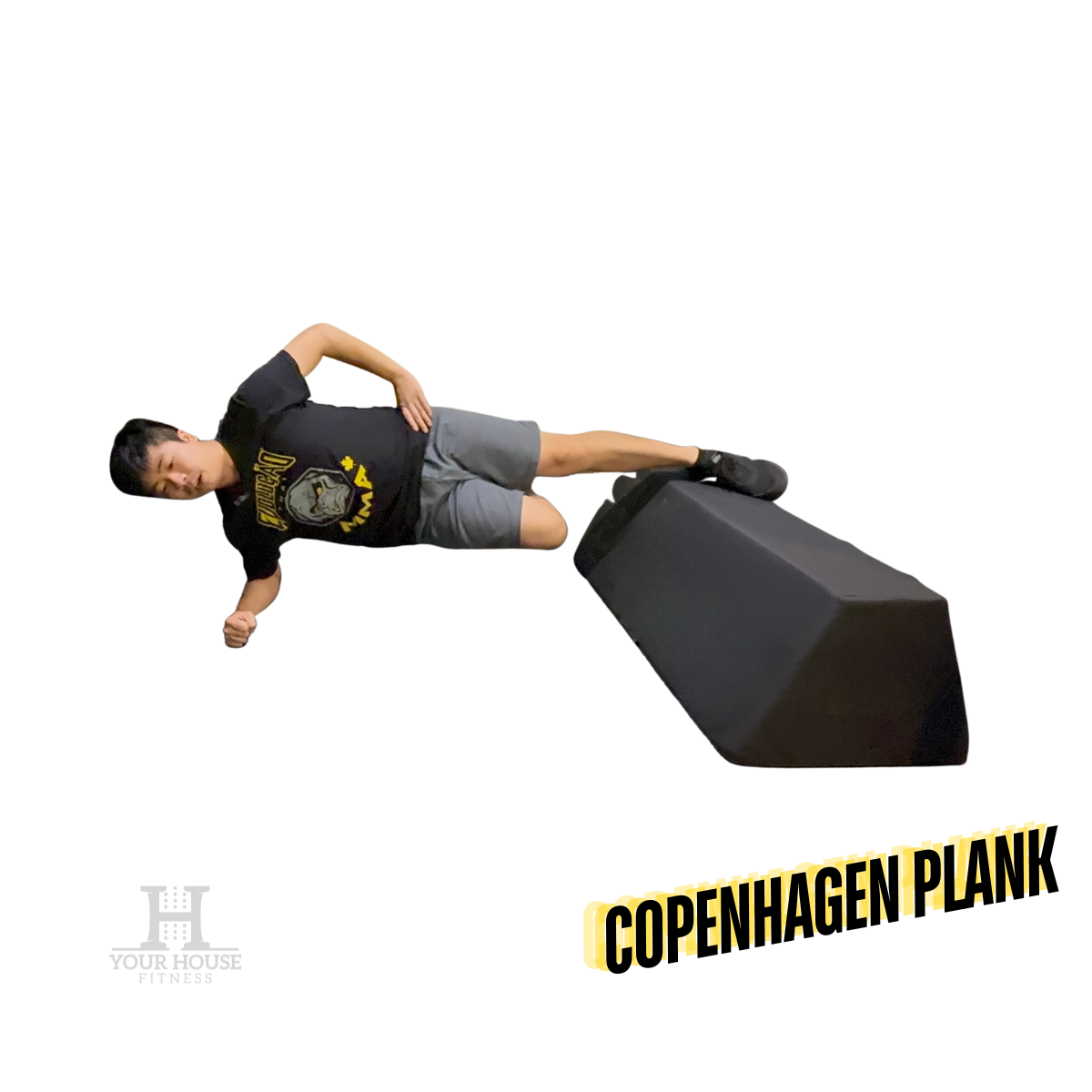Copenhagen Plank: A Core & Adductor Powerhouse Exercise
Table of Contents
What Is a Copenhagen Plank?
The Copenhagen plank is a challenging variation of the side plank that shifts the emphasis from your glutes to your adductors (inner thigh muscles). While a side plank typically places most of the weight on the bottom leg and engages the glutes and obliques, the Copenhagen plank elevates the intensity by requiring your top leg (specifically the adductor) to support your body.
This movement is ideal for athletes, especially those involved in sports or lifts like the sumo deadlift, which demand strong adductor and core engagement.
How to Do a Copenhagen Plank
To perform the Copenhagen plank:
Find a bench or box roughly the height of your upper arm. If it's too high, it’ll be difficult to hold form; too low, and it won’t engage the right muscles.
Lie on your side, place your top leg on the bench so the inside of your foot is resting on top, your elbow should be directly under your shoulder.
Take a deep breath and brace your core tightly. In one motion, lift your body off the ground into a side plank position. Keep your hips up, and maintain a straight line from head to foot.
Muscles Worked in the Copenhagen Plank
The Copenhagen plank is a core stability exercise with a unique twist, it heavily targets the adductors.
Adductors (inner thighs): The primary movers, especially on the elevated leg.
Obliques and transverse abdominis: For core stabilization.
Shoulders: Particularly the deltoids for maintaining the side plank position.
Quadratus lumborum: for lateral spinal support.
Copenhagen Plank Alternatives
If the full Copenhagen plank is too advanced or you're looking to change things up, try these alternatives:
Modified Copenhagen Plank (knee on bench): Great for beginners to build adductor strength safely.
Traditional Side Plank: Less adductor engagement, more focused on the obliques and glutes.
Side Plank with Leg Raise: Adds a dynamic challenge and introduces some adductor activation.
Standing Adductor Cable Pulls or Ball Squeezes:Target adductors in a more isolated manner.

